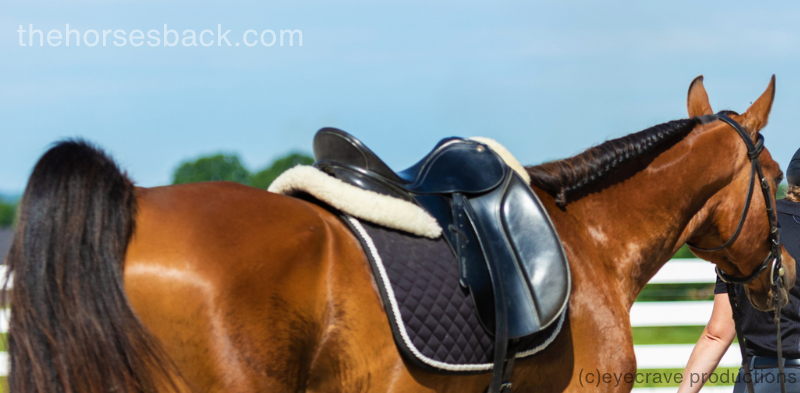
Achieving good saddle fit with Arabian horses can be challenging on account of some breed-typical features that make their backs somewhat complicated. You can correct one issue and run immediatley into another, for there’s often very little wriggle room when it comes to the Arabian back.
Of course, not all horses in a single breed are the same, as there are many variations in conformation and posture. However, saddle fitters usually agree that Arabians can be the trickiest of customers to fit.
This post introduces some commonly seen issues, so you can look at your Arabian’s body with a clearer understanding of what’s happening with a saddle (mis)fit, and what you need to be looking for as you try to move forwards.
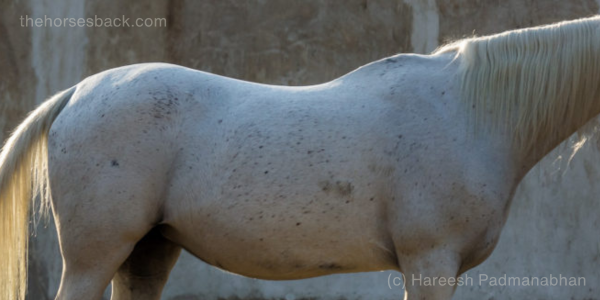
The Arabian Horse and Saddle Fit Problems
Here are the conformational points that feed into many Arabian saddle fit issues. Arabians display some or all of these features:
- Compact and short-coupled
- Wide flat back
- Well sprung ribcage
- Long set back withers
- High croup
The combination of these features varies between the main strains of Arabians as well as individual breeding lines.
Briefly, strains are breed subgroups, often named after the Sheikhs or tribes that bred them. Each strain has subtle variations in physical features, temperament, and abilities. Some are pictured in this post, purely to help us see the influences on modern conformation more clearly.
To make these features’ interaction in saddle fit easier to understand, I’ve organised these conformation points within three sections in this post.
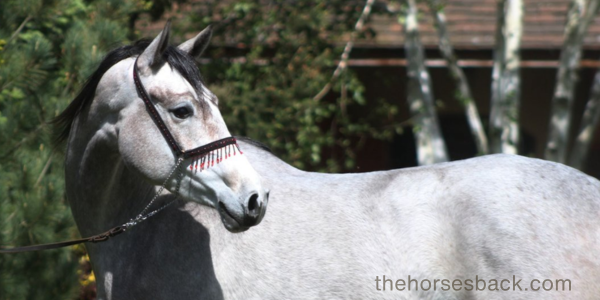
1. A Short Wide Back
As a breed, Arabians probably come with more legends attached than any other. One of these is usually accepted without question: that the breed has one fewer rib than other breeds.
If you talk to an equine anatomist with decades of experience, you’ll hear that most Arabians have the regular number of thoracic vertebrae (18), but some have fewer lumbar vertebrae (five instead of six).
This does shorten the back overall and brings the last rib closer to the point of hip, creating a short-coupled horse.
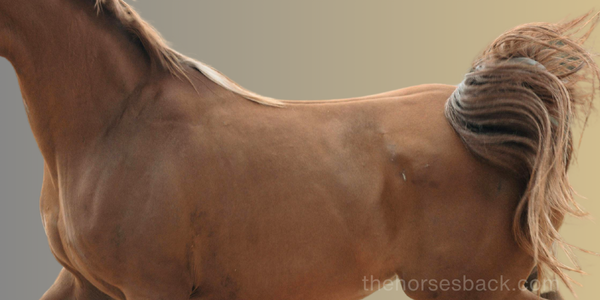
How does this affect saddle fit on its own?
First, the round ribcage may lead to the saddle rolling. As it is usually accompanied by a forward girth ‘groove’, choice of girth becomes especially important.
An anatomical girth that clears the elbows and is wider in the centre (for a wide barrelled horse with a flat sternal area) may assist with stabilising the saddle.
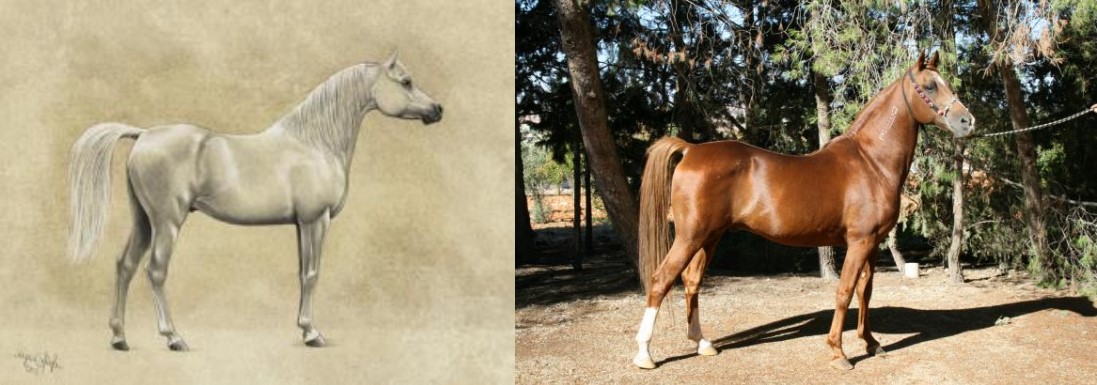
So as well as clearing the wither, the saddle must be wide enough to accommodate the ribcage and well-muscled back in the fit horse.
Western trail saddles recommended for Arabians have shorter skirts with wider gullets, and a bit more curve along the length. English style saddles are usually wide, with wider, flatter and thinner panels.
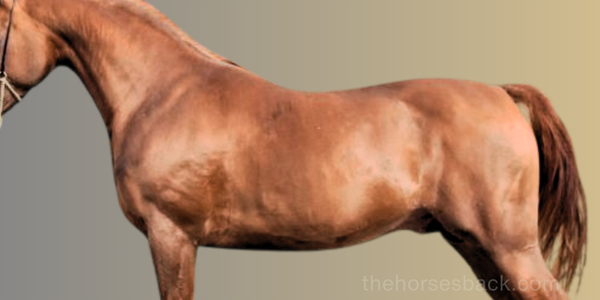
2. Low to Medium Withers
The saddle area is shortened by the long set-back wither, which is an aspect of the deep chest, high set neck, and laid back shoulder.
As well as being long, Arabian withers are frequently low and well-covered, with heavy muscle at their base.
A wide, hoop style tree is often the answer for English style saddles.
Western saddles, as well as being shorter with rounded skirts that won’t impact the point of hip, may have need to have more flare in the bars to accommodate the wide shoulders and scapular movement.
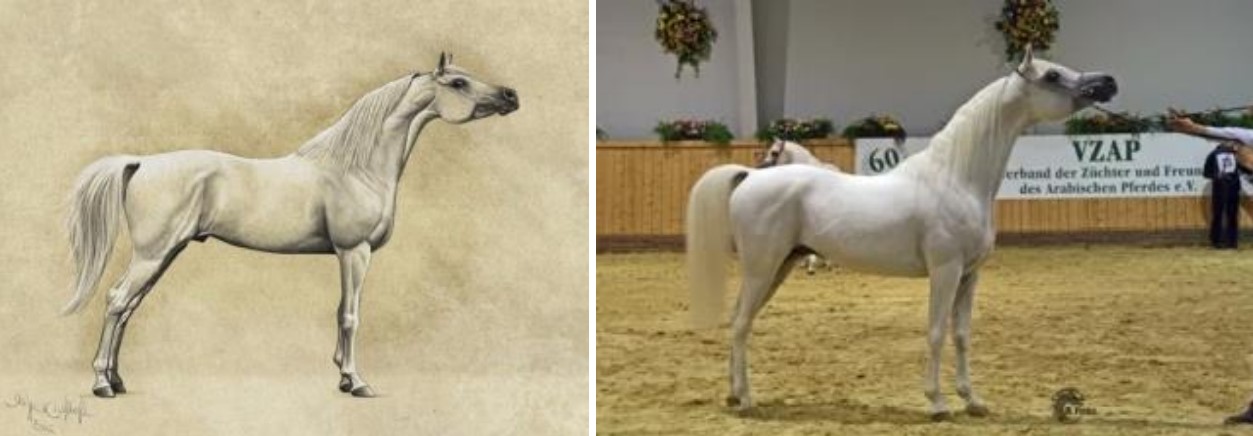
Arabians may also have withers of a more middling height, which also widen out into a rounded ribcage. If the horse’s back is fairly flat along the topline, then the tree and panels need to be straighter too.
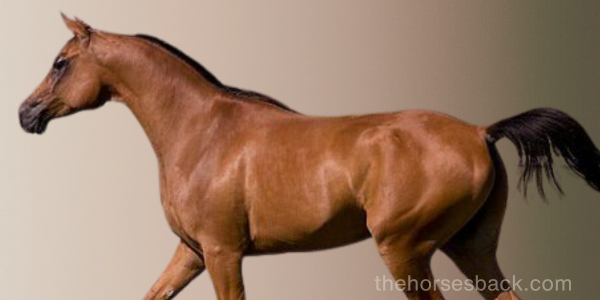
With these horses, the saddle gullet needs to be higher, but still have enough width to accomodate the shoulder and rib cage. (Of course, if the horse is a lot finer, then narrow may be what is needed.)
Fitting around the broad muscle at the base of the neck is not achieved by simply widening a synthetic saddle by swapping gullet plates – doing so will make the saddle more curved along its length, which isn’t suitable for a horse with a straight back. On these horses, the saddle may rock.
3. Height of Croup
Arabians are known for their relatively long, level croup (top of the hindquarters) and naturally high tail carriage. The height of the pelvis at the sacral tuberosities (the bony peak) may be as high as the withers, or indeed higher. This may be obscured in images where the horse’s hind legs are extended out.
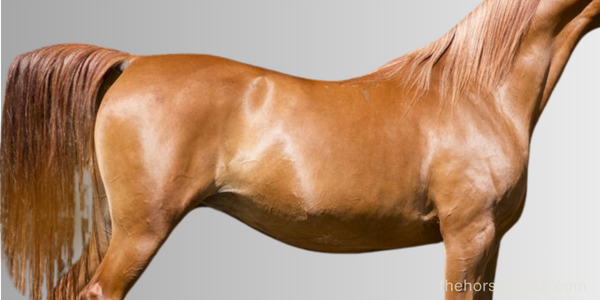
There is already a potential issue because when the lumbar spine is short, it must sweep up to the pelvis at a steeper angle than with a longer lumbar spine.
Add to this a topline built from full curves – the Arabian’s famous flowing lines – and a definite dip in the thoracic spine (saddle area). The upward sweep to the pelvis is now more accentuated.
A postural issue also comes into play, as a naturally high head carriage dips the spine further (ie. hollowing the back).
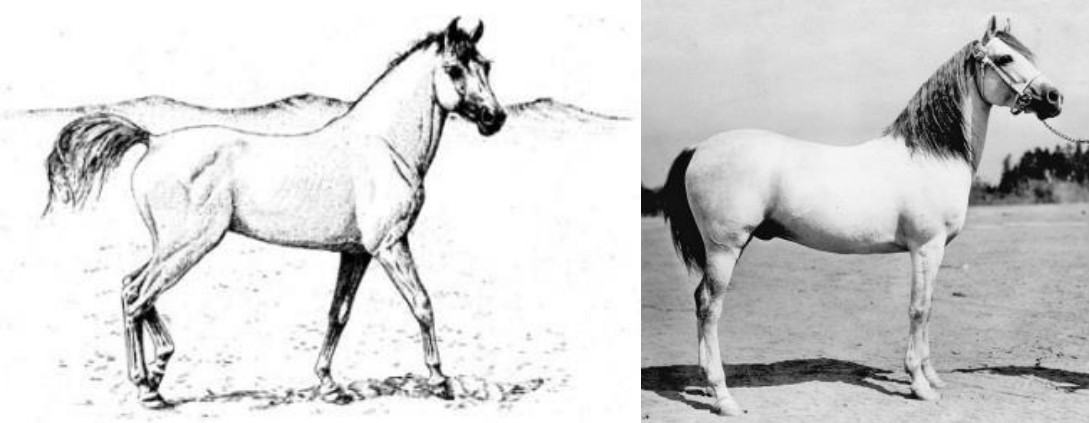
Two things can now be happening.
If low broad withers are accompanied by a higher croup, there may be issues with the saddle sliding forwards. The saddle may be unstable and will roll easily on the horse’s rounded body – more so than if the croup is level with the withers.
The bigger issue is that the saddle may bridge between the lumbar muscles and the set back withers and muscles, creating pressure at these points.
If both of the above are happening at once, the saddle may both press into the shoulders and roll from side to side, creating a very uncomfortable and potentially painful experience for the horse, and little stability for the rider.
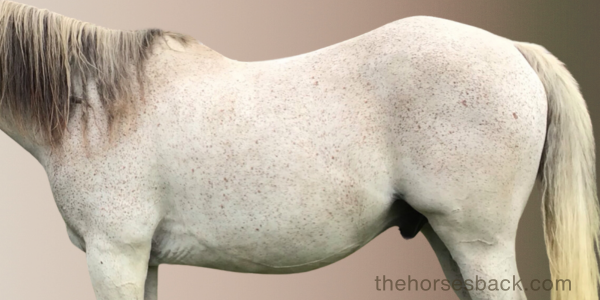
In these cases, saddles may need shorter tree and panels to avoid resting on the upswept lumbar spine.
But it can’t be small: it still needs sufficient width to clear the spine and the withers, and to sit across those wide back muscles with a good, even contact.
The Complex Arabian
As we can see, the combined issues that can arise with Arabian conformation require us to think about the shape of the saddle tree along every inch of its length and width.
Only once their complicated conformation is understood, can great saddle fit be achieved.
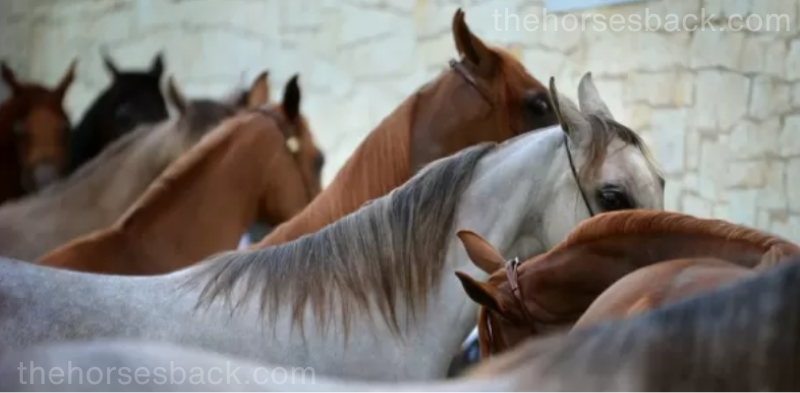
Thankfully, there are many saddles out therem including Arabian-specific models, which are becoming more and more finely tuned.
It has to be said we must thank the world of endurance riding for many of the more innovative solutions, with special designs created to accomodate the conformation and movement of this remarkable breed.
Useful saddle fitting resources
This article introduces the problems, so what about solutions?
The following resources provide more information on getting your saddle fit right (I’ll add more soon!)
Western Saddle Fit – The Basics 67-minute video on DVD or Vimeo streaming from Rod and Denise Nikkel
Western Saddle Fit: Well Beyond the Basics 6 hours for equine professionals from Rod and Denise Nikkel
The Horse’s Pain-Free Back and Saddle-Fit Book eBook from Joyce Harman DVM
The Western Horse’s Pain-Free Back and Saddle-Fit Book Soundness and comfort with back analysis and correct use of saddles and pads, from Joyce Harman DVM
Saddlefit4Life YouTube channel presents numerous educational videos, from Jochen Schleese of Schleese Saddlery.
Short back, shark fin withers, sway back has lead me to riding my Arab in a treeless Ghost saddle. Very informative article thank you for including lovely pictures as well.
The Ghost is fabulous! A lot of interesting minimal tree and treeless saddle designs have come from the endurance direction, where so many Arabians have suffered saddle fit RSI over the decades! And I’m so glad you appreciate the images, as I spend nearly as long researching them as writing the text. I personally saw more and more in them as I fine-tuned the written information.
Jeannette, would you share what model you found worked? My Arab-cross gelding is also super short backed with shark fin withers (which accentuates his slight sway back), well sprung ribs, big shoulders, and princess-and-the-pea sensitivity. His DNA test showed Homsteiner as #2, which explains his monstrous withers).
Thank you!
Love this article Jane, so good to see a focus on the challenges of fitting an Arabian. Brilliant analysis of body types and bloodlines. I have been told that there is no saddle that will fit Arabians so this is nice to see a more positive discussion.
Thank you Carol, that means a lot! There are certainly easily fitted Arabians and harder ones along the scale. The saddles are out there, but it depends on the fitter (or often the owner) to recognise the combination of characteristics in the individual’s back. The point of the post is to help the owner understand the back conformation of the horse standing in front of them.
I’m am currently struggling to fit my Arabian mare with a saddle I can afford. She’s 14.2. 3/4 Arabian and 1/4 saddlebred. Narrow chest. Low withers. Well sprung ribs. Short back. Etc. It’s been an issue for sure.
Do you have recommendations on a non-rounded skirt saddle, fairly common and affordable brand, that tends to fit this body type?
I’m unable to recommend saddles. Hopefully with the understanding you have of your mare’s conformation, it should be easier to discuss this with reputable saddle retailers who have good training and qualifications in fitting, and who carry multiple brands. Wishing you the best of luck.